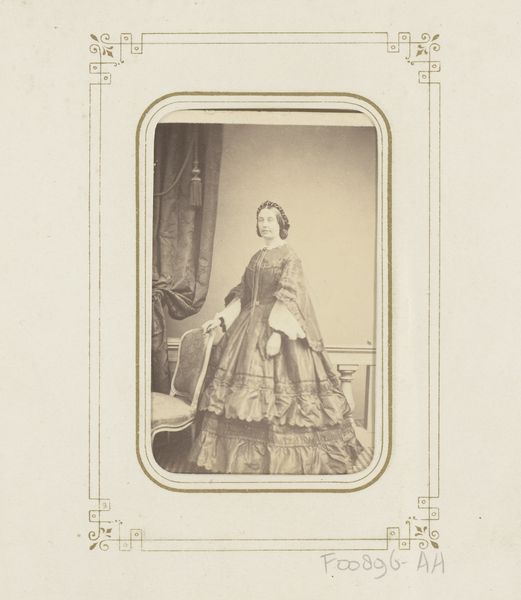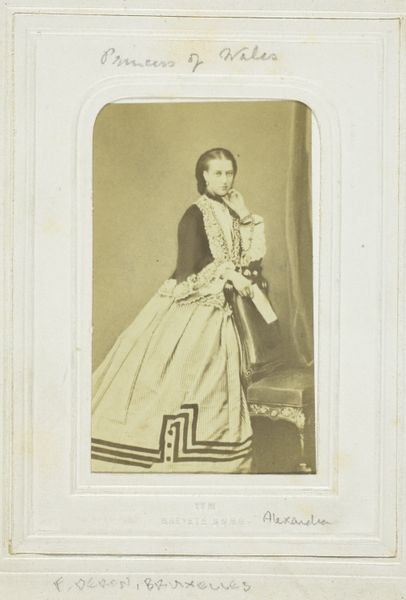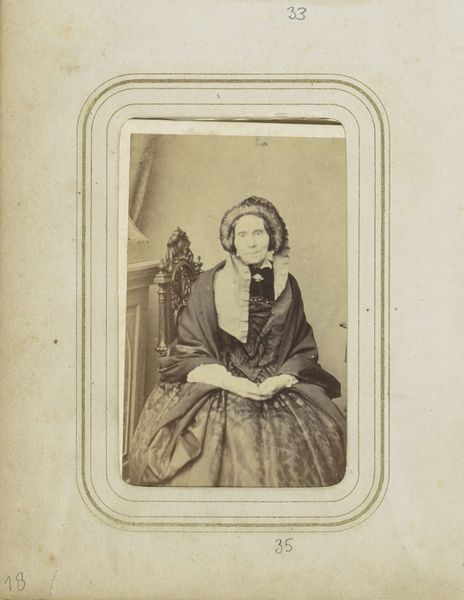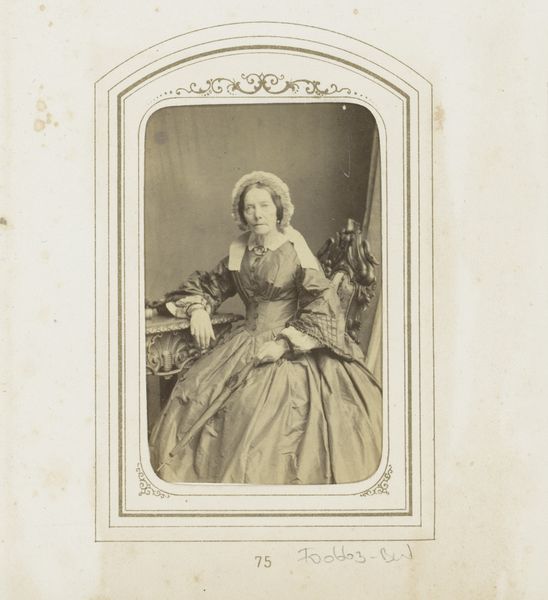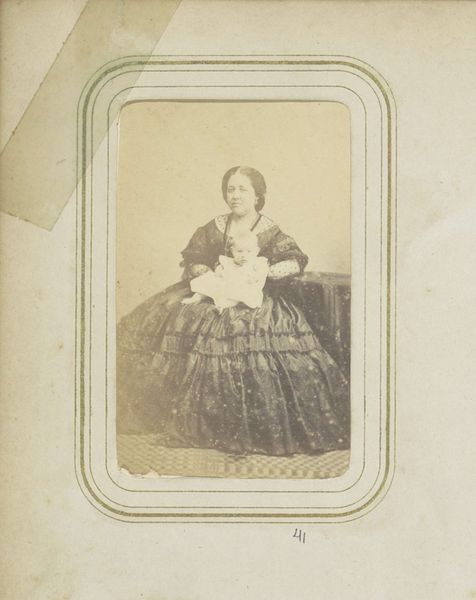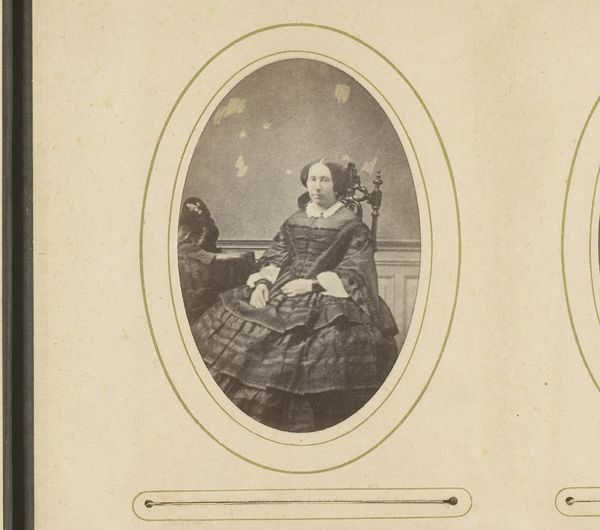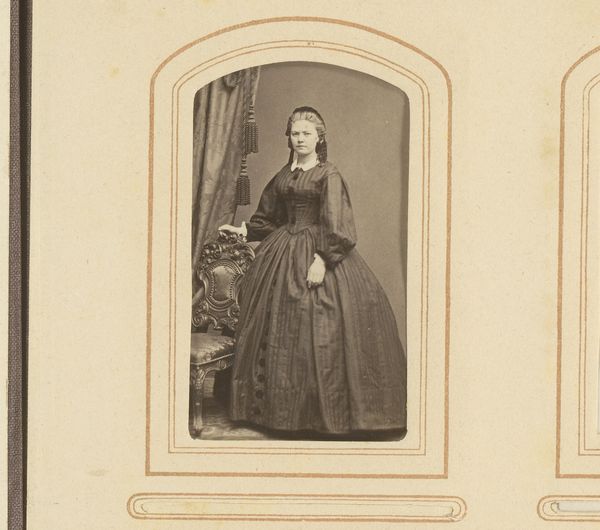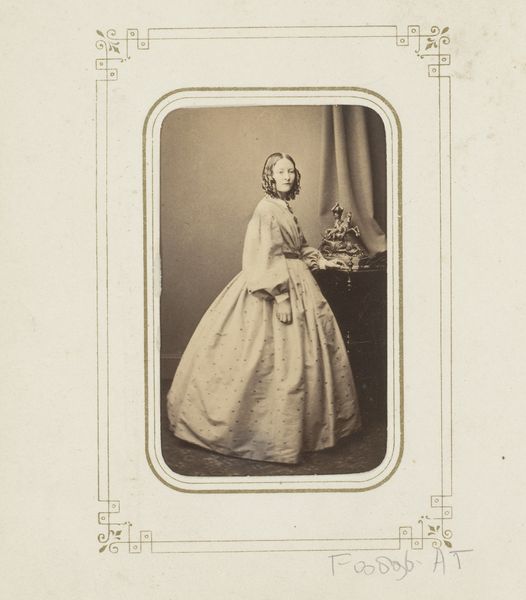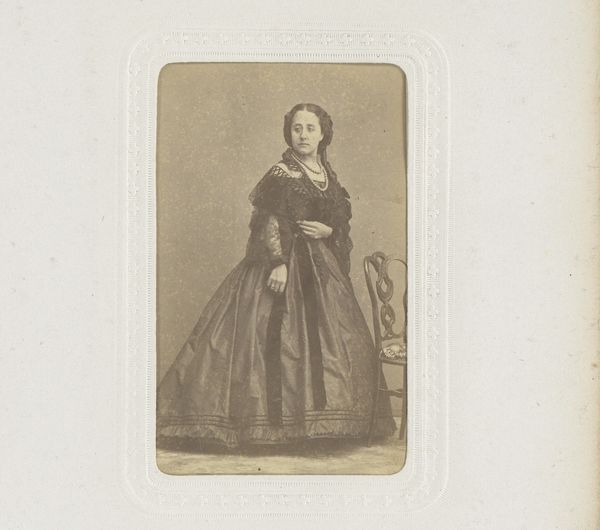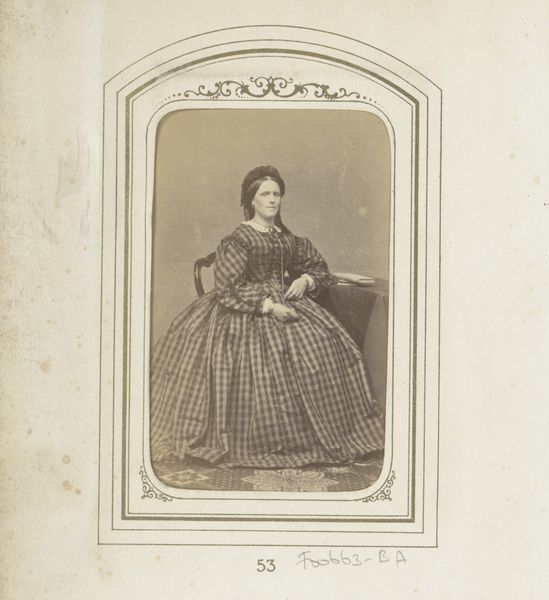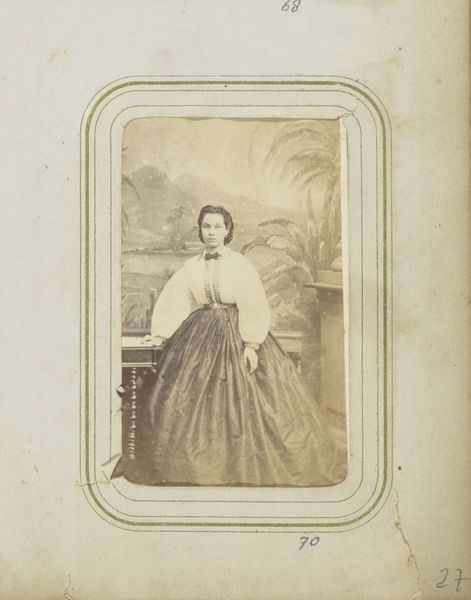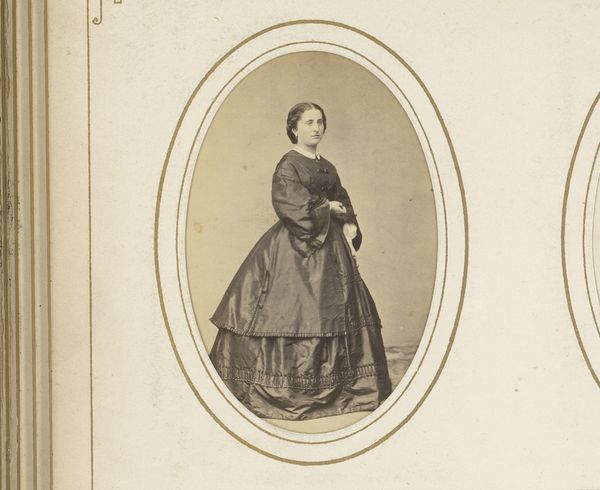
Dimensions: height 86 mm, width 52 mm
Copyright: Rijks Museum: Open Domain
Curator: Before us, we have a portrait of a woman rendered in the daguerreotype style of photography. Dating from somewhere between 1855 and 1890, it’s a fascinating glimpse into the visual culture of the Victorian era. Editor: She looks so...resigned, almost melancholy. The way she’s posed, leaning slightly on the chair, and that dark shawl contrasting with her light dress... It speaks of constraints and unspoken emotions. Curator: Indeed. The daguerreotype, with its meticulous detail, gained popularity as a portrait medium among the burgeoning middle class. This portrait would have served as a statement about status and propriety. Consider the framing; the ornate borders further underscore her place within a certain societal strata. Editor: It's interesting how the act of creating an image then already came loaded with socio-political implications. Access to photography was limited. This photograph feels staged—every detail, from her hair to the drapery behind her, reinforces an image of respectability while potentially obscuring a complex, individual reality. Who was she beyond this photographic performance? Curator: That’s a crucial point. Analyzing portraiture, we must remember the performative aspect, but also that, by its nature, images serve specific ends, even today. To whose purpose? This portrait enters an arena of marital negotiation and upward mobility within Victorian London's photographic studios. We must contextualize these within the institutional history that supported and validated these portrayals. Editor: Yes, exactly. But this isn’t just a document of institutional practice. For a woman, perhaps especially during this era, every decision—clothing, posture—was a negotiation with prevailing power structures. What can we intuit, as modern viewers, about this exchange between subject, photographer, and the envisioned audience of the portrait? Her story deserves speculation. Curator: Absolutely. Examining not just the context, but the entire socio-political scene can give us deeper access to who and where this portrait would function within broader structures of visual imagery. Thank you. Editor: It pushes one to ask the necessary questions about who defines and controls representation. Food for thought.
Comments
No comments
Be the first to comment and join the conversation on the ultimate creative platform.
